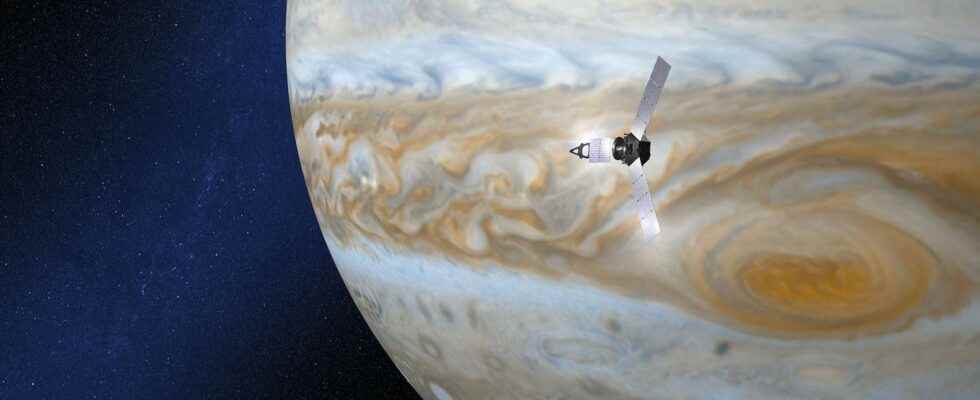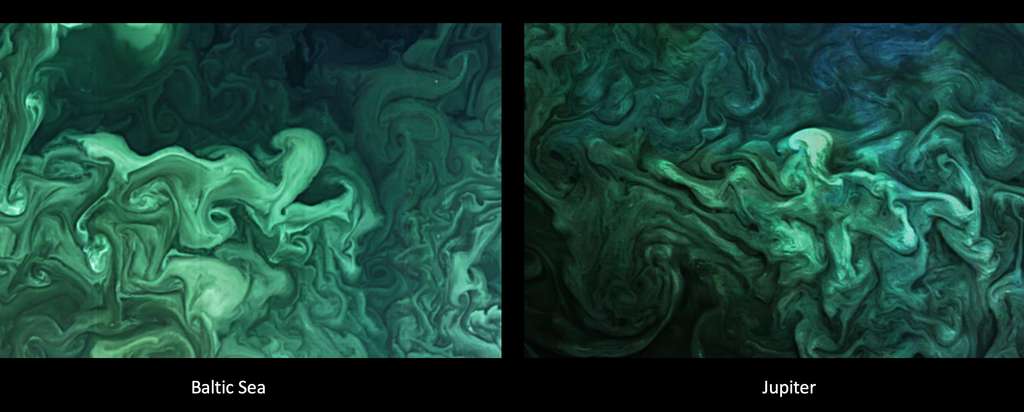To reach Jupiter, it took the Juno probe about five years. From this distant world, it sends astronomers images that help them better understand the giant planet and its 80 moons. Images which, at times, are strangely reminiscent of the Earth.
You will also be interested
[EN VIDÉO] Fly over Jupiter with the Juno probe Experience Jupiter as you’ve never seen it through the work of a Citizen Scientist. Using the images collected by the Juno probe, he succeeded in creating a 3D model of the Jovian surface, of which he offers a breathtaking overview.
More than ten years ago now, the Juno probe was sent in the direction of Jupiter. With the aim of studying in detail, the mysterious giant planet. For more than five years now, it has sent valuable information back to astronomers. Today, they share with us two pictures which show surprising resemblances to our good old Earth.
Recall that theatmosphere of Jupiter is one of the most turbulent places in our Solar system. And Juno has already allowed astronomers to discover that the famous Great Red Spot is much deeper than they thought, extending up to 500 kilometers below the summit of the clouds. One more proof of the violence of the phenomena which shake the atmosphere of the giant planet.
Turbulence similar to that of our oceans
The last pictures sent back by the Juno probe zoom in on features of Jupiter that are strangely reminiscent of others on Earth. Like those turbulent clouds, still in the atmosphere of the giantess. It was Lia Siegelman, an oceanographer who noted the disturbing resemblance between these cyclones joviens and a phytoplankton overgrowth in the Norwegian Sea.
Same kind of phenomenon for another cliché. Still images of very agitated clouds on the side of Jupiter and, this time, a phytoplankton blooming, somewhere in the southern Gulf of Bothnia, in the Baltic Sea. So many images that allow oceanographers to study the large cyclones and the rich turbulence at the poles of Jupiter much like the features that form in our oceans here on Earth.
Interested in what you just read?
.
fs3

